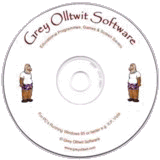
About Us
ADD/ADHD News
ADD/ADHD Books
ADDerwards
Creative ADDers
Donate
Events
GO Games
Information
Links
Natural Remedies
Research
Resources
Support Groups
Whats New
ADHD SOFTWARE
FREE DVD or CD

ADD/ADHD Online Information
ADD/ADHD Information
Sensory Integration Disorder
This information has been put together by us from various sources which are freely available within the public domain to help our visitors have an idea of the effects of this condition and how to help children who are diagnosed. We would also acknowledge that some of the information is from the Sensory Integration UK Support Network and we would suggest that visitors click here for further information, help and support.
What is Sensory Integration?
Sensory experiences include touch, movement, body position,vision,smell,taste, sound and the pull of gravity. The process of the brain organising and interpreting this information is called sensory integration. Sensory integration provides a crucial foundation for later, more complex learning and behaviour.
For most children sensory integration develops in the course of ordinary childhood activities. But for some children, sensory integration does not develop as efficiently as it should. This is known as dysfunction in sensory integration (D.S.I.). When the process is disordered a number of problems in learning, motor skills and behaviour may be evident.
The concept and theory of sensory integration comes from a body of work developed by A. Jean Ayres, PhD, OTR, an occupational therapist who was based in California, U.S.A. As an occupational therapist, Dr. Ayres was interested in the way in which sensory processing and motor planning disorders interfere with activities of daily living and learning. This theory has been developed and refined by the research of Dr. Ayres, as well as other professionals. In addition, literature from the fields of neuropsychology, neurology,physiology,child development, psychology and the conducting of basic and applied research studies have contributed to theory development and intervention strategies.
Some signs of Sensory Integration Dysfunction:
Physical clumsiness
Difficulty learning new movements
Activity level unusually high or low
Poor body awareness
Inappropriate response to touch, movements, sights or sounds
Poor self esteem
Social and/or emotional difficulties
In addition there may be:
Distractibility, impulsivity, limited attention control.
Delays in speech, language and/or motor skills.
Specific learning difficulties.
Poor self care skills.
An important step in promoting sensory integration in children is to recognise that it exists and that it plays a vital role in their development.
Research has identified the main diagnostic groups linked with Sensory Integration as:
Pervasive Developmental Disorder (including autism and aspergers syndrome)
Attention Deficit Hyperactivity Disorder (A.D.H.D./A.D.D,)
Learning disorders ( i.e. specific learning difficulties)
Developmental disabilities
Fragile X syndrome
DCD (including Dyspraxia)
What Can Be Done?
If a child is suspected of having sensory integrative disorder, an assessment can be carried out by a suitably qualified occupational therapist, physiotherapist or speech and language therapist who have taken post graduate training in sensory integration. Assessments usually consists of both standardized testing and structured observation of posture, balance and coordination as well as responses to sensory stimulation. After carefully analysing test results and assessment data from other professionals and parents, the therapist will make recommendations regarding appropriate therapy and will provide you with a profile of your child's sensory processing abilities and whether or not your child has a D.S.I.
One important aspect of therapy that uses a sensory integration approach is that the motivation of the child plays a crucial role in the selection of the activities. Most children tend to seek out activities that provide sensory experiences most beneficial to them at that point in their development. It is this active involvement and exploration that enables the child to become a more mature, efficient organizer of sensory information.
Training of specific skills is not usually the focus of this kind of therapy. Rather then treating symptoms, this kind of therapy. Rather than treating symptoms, this therapy attempts to ameliorate the underlying conditions.
[Back To Top Menu]
ICD-10 copyright © 1992 by World Health Organization. Internet Mental Health (www.mentalhealth.com) copyright © 1995-1997 by Phillip W. Long, M.D.
Back to Information
Home About Us ADD/ADHD News ADDerwards Advertising Books Contact Us Creative ADDers Donate
Events Forums Information Links Natural Remedies ADDers.org News Research Resources Search adders.org
Site Map Social Stories Sponsor Events Student/Researchers Support Groups Supporters
Join us on....

ADHD SOFTWARE
FREE DVD or CD
